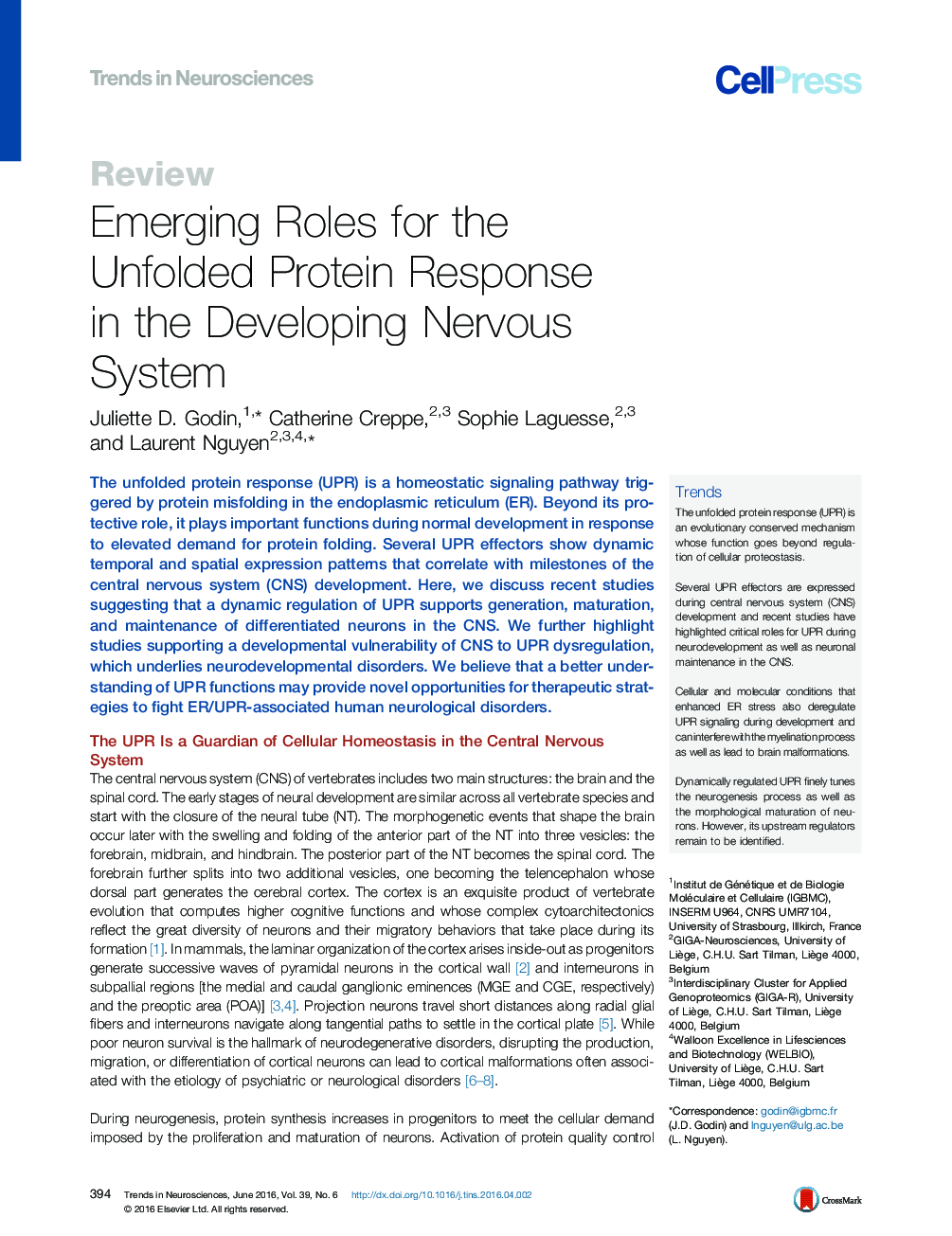| Article ID | Journal | Published Year | Pages | File Type |
|---|---|---|---|---|
| 4354129 | Trends in Neurosciences | 2016 | 11 Pages |
The unfolded protein response (UPR) is a homeostatic signaling pathway triggered by protein misfolding in the endoplasmic reticulum (ER). Beyond its protective role, it plays important functions during normal development in response to elevated demand for protein folding. Several UPR effectors show dynamic temporal and spatial expression patterns that correlate with milestones of the central nervous system (CNS) development. Here, we discuss recent studies suggesting that a dynamic regulation of UPR supports generation, maturation, and maintenance of differentiated neurons in the CNS. We further highlight studies supporting a developmental vulnerability of CNS to UPR dysregulation, which underlies neurodevelopmental disorders. We believe that a better understanding of UPR functions may provide novel opportunities for therapeutic strategies to fight ER/UPR-associated human neurological disorders.
TrendsThe unfolded protein response (UPR) is an evolutionary conserved mechanism whose function goes beyond regulation of cellular proteostasis.Several UPR effectors are expressed during central nervous system (CNS) development and recent studies have highlighted critical roles for UPR during neurodevelopment as well as neuronal maintenance in the CNS.Cellular and molecular conditions that enhanced ER stress also deregulate UPR signaling during development and can interfere with the myelination process as well as lead to brain malformations.Dynamically regulated UPR finely tunes the neurogenesis process as well as the morphological maturation of neurons. However, its upstream regulators remain to be identified.
